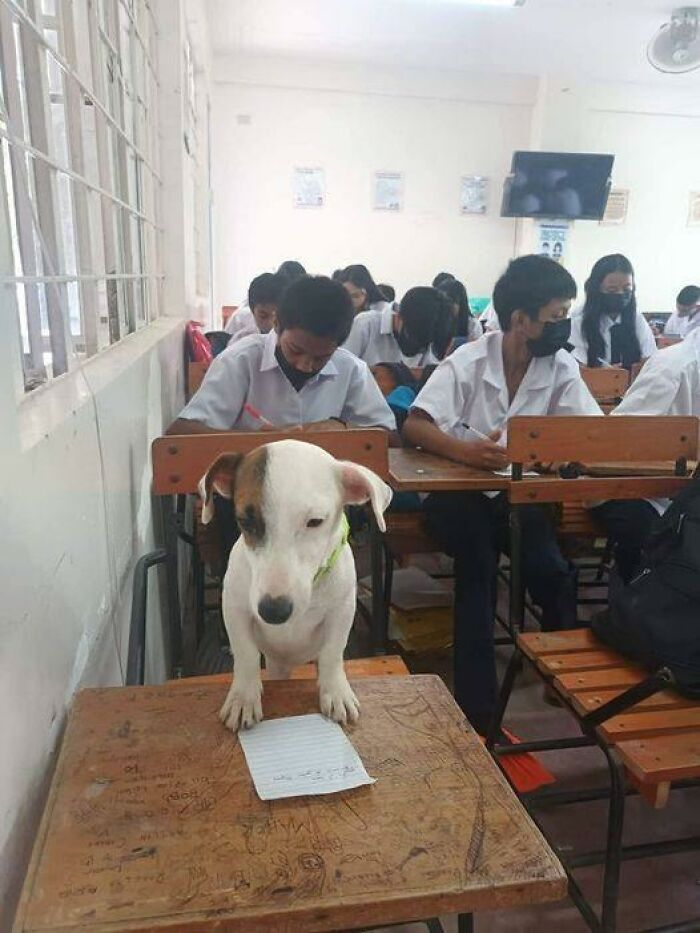ANIMALS
Top Times People Were Shocked By Animals In Strange Places
Let’s appreciate the charm of animals—adorable, quirky beings that never fail to bring joy. Enjoy a collection of the funniest moments from “Animals in Random Places” on Facebook. From cats in tight boxes to dogs striking poses, these pictures include bunnies and hamsters for extra whimsy. Scroll for a serotonin boost, upvote your favorites, and share your thoughts! Explore more similar content in our previous articles.
#1

Pets bring joy with their playful antics, but sudden changes in behavior may signal an underlying issue. J. Cutler advises checking with a vet to rule out medical reasons. Silly behaviors may result from past rewards, but repetitive or stress-related actions require guidance from a behavior professional or vet.
#2

Pet owners often face behavior challenges, such as incessant barking or destructive chewing, raising concerns. Fortunately, these issues can be effectively tackled with the right strategies. J. Cutler highlights several common factors contributing to pet behavior challenges:
- Training issues: Fundamental manners and training play a crucial role in many households. While attending training classes proves beneficial, numerous online resources are available to address specific behaviors.
- Accidental reinforcement: Unintentionally reinforcing undesired behavior is a common pitfall. For instance, providing attention when a pet whines, barks, or meows inadvertently encourages the continuation of such behavior. To rectify this, it’s essential to cease rewarding unwanted actions and instead focus on teaching alternative behaviors.
- Fear or anxiety: Underlying emotions like fear or anxiety often manifest in various behavior problems, including aggression, separation anxiety, or excessive barking. Simply stopping the behavior is insufficient; addressing the root cause is vital. Seeking guidance from a professional, such as a behaviorist or behavior consultant, is recommended to manage both the behavior and the underlying emotions effectively.
- #3

The environment significantly influences the emotions and behaviors of your animals. According to J. Cutler, the surroundings wield considerable sway over animal behavior. Cutler emphasizes the importance of providing sufficient mental and physical stimulation in your pets’ environment for their overall well-being. Many animals thrive on consistency and predictability, and a deficiency in these aspects can contribute to behavioral issues. Moreover, elements within the environment, such as unsettling sounds, visual stimuli, or the presence of other people/animals, that induce fear or anxiety in your pet may also give rise to a variety of behavioral problems.
#4

#5

Pet owners often cultivate a unique connection with their animal companions, constantly seeking to decipher their needs and ensure overall well-being. Given J. Cutler’s experience as a dog owner, we delved into whether there are prevalent misconceptions regarding dogs’ behavior and their rapport with humans that she aims to dispel. Here’s an insight into some enduring myths surrounding dogs:
- Dominance Theory: Contrary to popular belief, dogs are not striving for dominance over humans. The debunked dominance theory suggests that dogs don’t exhibit certain behaviors to assert alpha status, dispelling the need for people to adopt an ‘alpha’ role around their dogs.
- Guilty Look: The notion that dogs appear guilty when they’ve done something wrong has been scrutinized. Research indicates that the ‘guilty look’ is a form of appeasement behavior. Dogs exhibit this behavior not because they comprehend wrongdoing but as a response to anticipating trouble.
- Tail Wagging: While tail wagging is often associated with happiness, it carries diverse meanings. Dogs may wag their tails due to joy, but it can also signal high arousal, fear, uncertainty, and more. Understanding the nuanced language of tail wagging enhances our comprehension of a dog’s emotional state.
- #6

#7

#8

#9

#10

